Integrating Art and Coding for Young Creators
Integrating Art and Coding for Young Creators
Today's young learners live in a world where imagination and technology go hand in hand. Creative coding links art and logic. It allows artists to create through computer programming. It turns a child’s imagination into interactive designs, animations, music, and games. This helps kids express their creativity.
This article looks at how creative coders mix expressions with logic. It explains why creative coding is important and how it helps develop well-rounded creators who can succeed in the digital world. It's not just coding; it's about helping kids use technology for art and discovery.
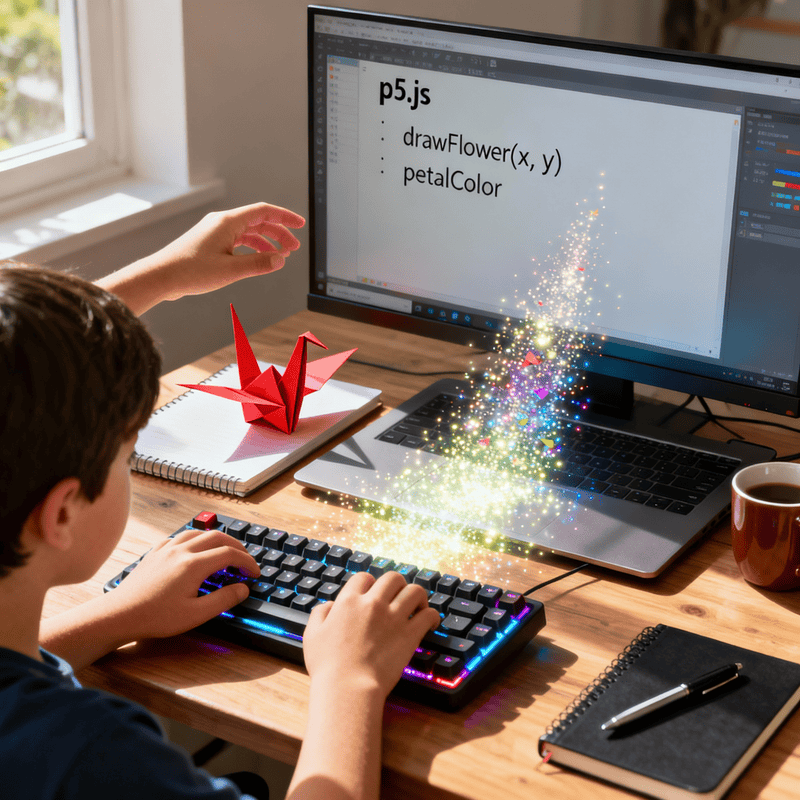
What is Creative Coding? The Perfect Blend of Technology and Imagination
Creative coding uses programming languages for artistic projects, expanding the role of programmers in the art world. This includes generative art, sound visualizations, interactive installations, and 3D animations. Unlike traditional programming, where the goal is to solve a problem or build a functional app, creative coding uses code as a primary medium for storytelling and design. It merges the analytical world of algorithms with the world of art.
Think of it as art meeting algorithms. When a child codes a drawing that moves with music, they’re not just entering commands. They’re bringing color, rhythm, and motion to life. This process nurtures creativity and helps them express ideas in new ways. Platforms like p5.js, Scratch make it easy for beginners to explore creative coding, turning curiosity into hands-on learning. These creativity support tools invite kids to experiment, play, and see how their ideas evolve through code.
In this way, creative coding courses go beyond teaching syntax. They help children use technology as a medium for creative expression, building a deeper understanding of how imagination and programming work together. Coding becomes more than a technical skill, it becomes a form of art that connects logic with creativity.

How Creative Coding Differs from Traditional Programming
Creative coding and traditional programming share the same foundations like logic, syntax, and algorithms, but they serve different purposes. Traditional coding focuses on function, powering apps, websites, and automation where success is measured by performance and efficiency. Creative coding, on the other hand, emphasizes artistic expression, storytelling, and emotional impact, using code as a tool for creativity rather than just utility.
In creative projects, there’s no single “right answer.” Students experiment, add randomness, and play with visuals, sound, and movement. They use programming to test ideas, not just to solve technical problems. This freedom attracts artistic learners who might find pure math or programming abstract, opening up a new world of possibilities.
Creative coding is a great fit for STEAM education. Here, Art works hand in hand with Science and Technology. When a child learns to “draw with JavaScript” or create music-reactive visuals with p5.js, they build creativity and computational thinking.
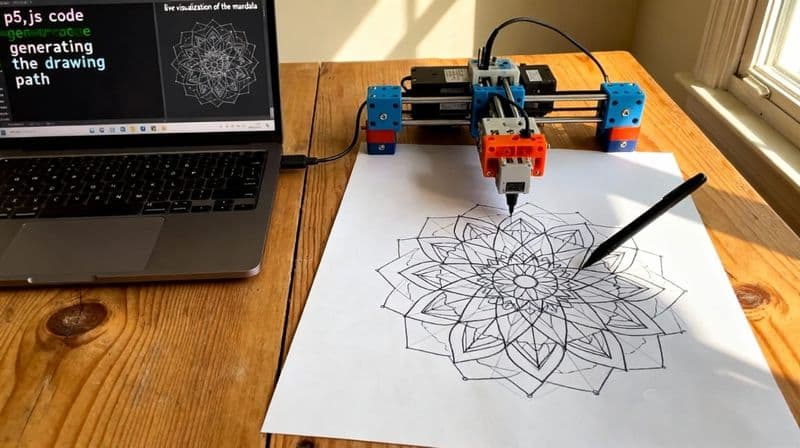
The Benefits of Creative Coding for Children's Development
Creative coding nurtures both sides of the brain. It boosts logic, structure, sequencing, and skills in visual arts, which are vital for problem-solving. It also sparks imagination, design skills, and storytelling. When kids learn to code art, they also build self motivation and self discipline, because they want to see their creative ideas come alive.
Debugging becomes less frustrating and more like a puzzle. Kids develop persistence because every fix brings their vision closer to reality. Group projects help build communication and collaboration skills. Team members share feedback with other creative coders.
A student coding a digital painting learns about shapes, color theory, and patience. All of this happens in one creative process. The joy of creating images and something beautiful from logic keeps them motivated and curious.
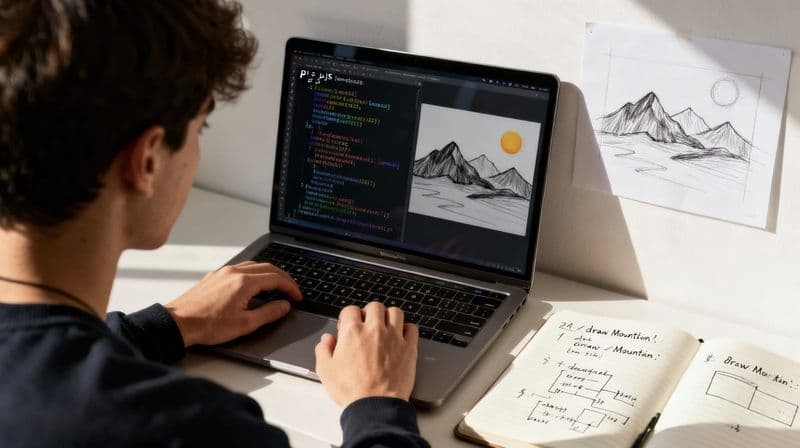
Building Both Technical and Artistic Skills Simultaneously
One of the most powerful aspects of creative coding is how it connects analytical thinking and artistic innovation. Coding logic sharpens structured reasoning, while design and animation enhance storytelling and imagination. Together, they create learners who can think critically and express themselves creatively.
Creative coding drives fields such as game design, animation, web development, and interactive media. Designers, animators, and developers rely on programming techniques that began as creative experiments. Early exposure builds creative confidence in kids. This means they believe they can solve problems and create art using technology, leveraging various resources available to them.
This confidence extends beyond classrooms. Kids who learn creative coding become designers, musicians, and generative artists. They view code as a creative process rather than just a technical skill.
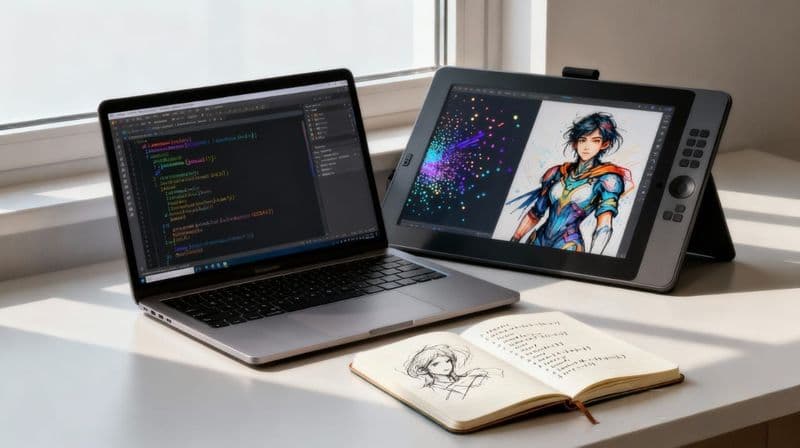
Creative Coding Art: Inspiring Projects for Young Artists
Creative coding turns imagination into reality. Kids can create art that moves, reacts, and evolves using simple algorithms. Here are some engaging examples and ideas:
Generative Art – Make unique patterns with a computer. Each time you create, they change. This teaches both randomness and control.
Interactive Games – Create digital worlds that react to player choices. Blend creativity and logic together.
Sound Art – Program visuals that dance to music, blending rhythm and visuals through computer algorithms.
Digital Portraits – Use code to recreate faces and scenes using lines, shapes, and colors.
In Codeyoung’s creative coding programs, students create art that responds to sound. When music plays, colors and shapes change dynamically. This hands-on exploration helps young creators connect their emotions, imagination, and logic.
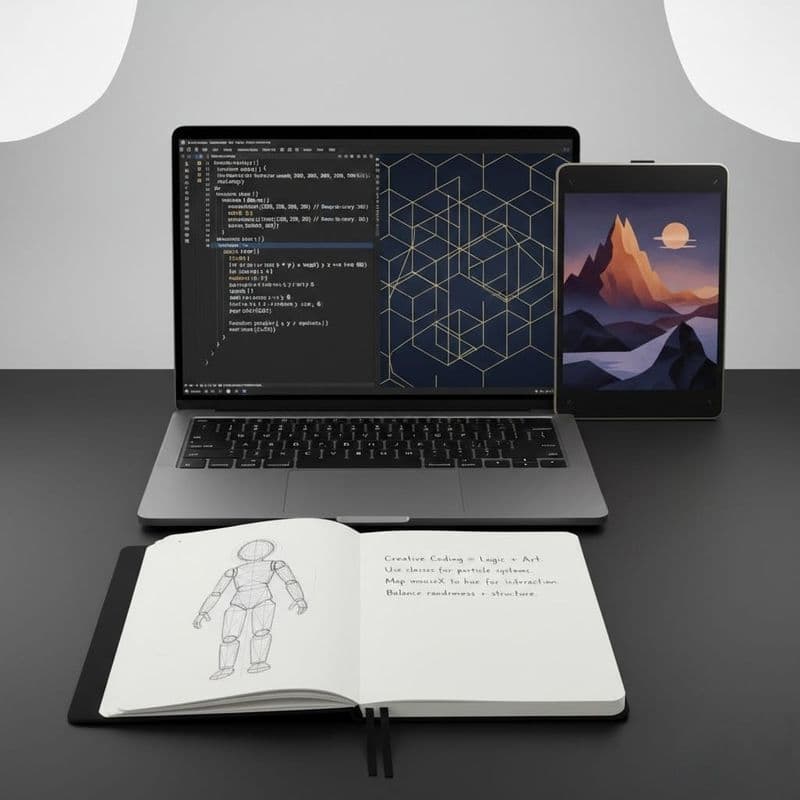
Coding and Creativity: Breaking Down the False Dichotomy
People often see coding as technical and art as emotional. In reality, both rely on experimentation and inspiration, especially in the field of computer art. Whether you are composing a song or coding a visual pattern, you follow the same creative process of testing, refining, and improving.
Creativity thrives within boundaries. Just as an artist works within a canvas, a coder creates within syntax. The limits of a programming language encourage experimentation and innovation. Many artists, like Mark Mitchell and others in generative art, started as programmers and they became pioneers in computer art.
Creating a game or an interactive mural involves storytelling, structure, and rhythm. These elements are also key in painting, poetry, and performance art. Live coding is a form of creative exploration. It shows how art evolves and innovates.
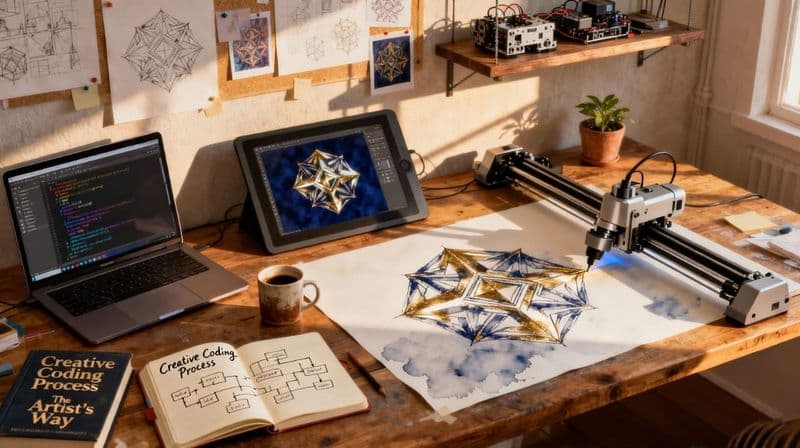
Getting Started: Creative Coding Courses for Different Age Groups
The best path to nurturing young creative coders is through guided, hands-on creative coding courses tailored to each age.
Ages 6–9: Start with visual block coding tools like Scratch or Code.org. You can make interactive stories and fun art games.
Ages 10–13: Start using text-based programming languages like Python or JavaScript. These are great for making generative art and animations.
Ages 14+: Dive into advanced creative coding. Use p5.js, Unity to create interactive media or 3D worlds.
Each stage builds on experimentation, discovery, and mastery. Platforms like Codeyoung make it easy for kids to express themselves. They help children think like both artists and programmers.
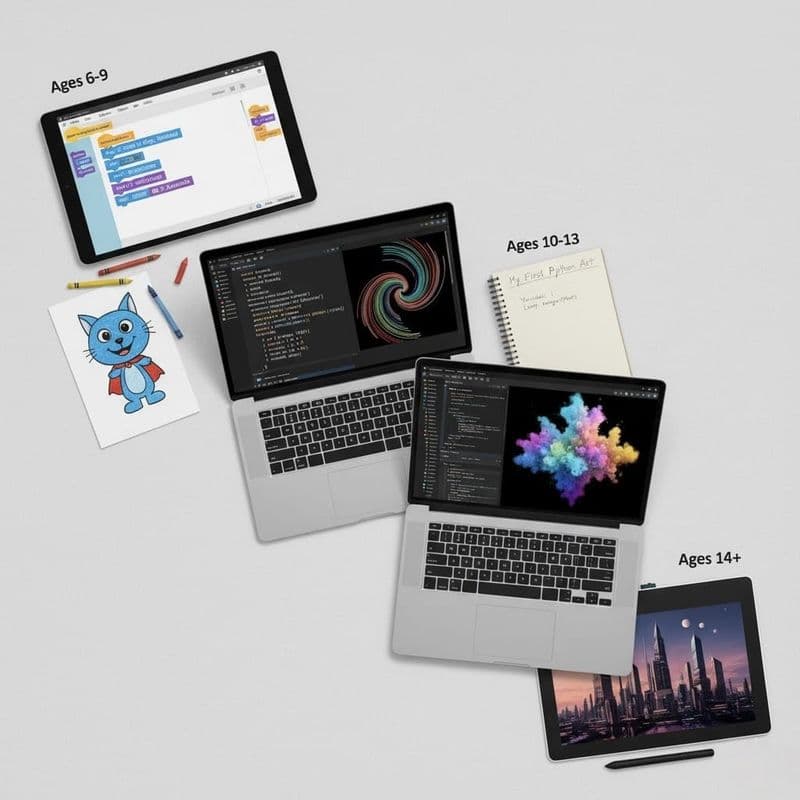
Creative Coders and the Future of Digital Expression
Creative coders are shaping the future of digital storytelling. From interactive installations to AI-generated art, coding now powers creative industries worldwide. Generative artists use algorithms to design visuals that evolve, adapt, or respond to live data. This makes every piece unique.
As artificial intelligence merges with creative coding, the next generation of creative people will use technology not just to consume, but to create. They’ll collaborate globally through online communities, share resources, and showcase their work to audiences around the world. This digital ecosystem helps artists discover new possibilities in expression and creativity.
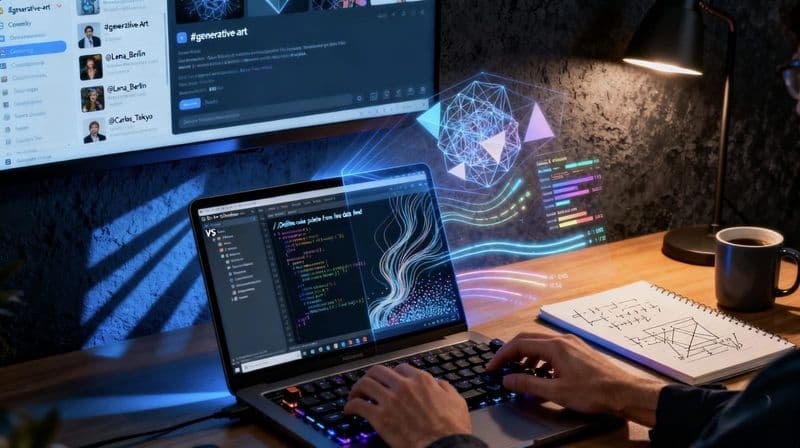
Exploring Generative Art and Design in Modern Education
Education systems worldwide are embracing creative coding as part of STEAM learning. By merging logic and imagination, schools teach kids to explore ideas through generative design. Instead of only reading about algorithms, students use them to paint, move, and build.
Creative coding encourages experimentation and problem-solving through play. Teachers can start projects that mix art, data, and storytelling. This helps kids see technology as a way to be creative. It’s more than just a tool. It’s a shift towards education that values both logic and imagination within the context of creative coding.
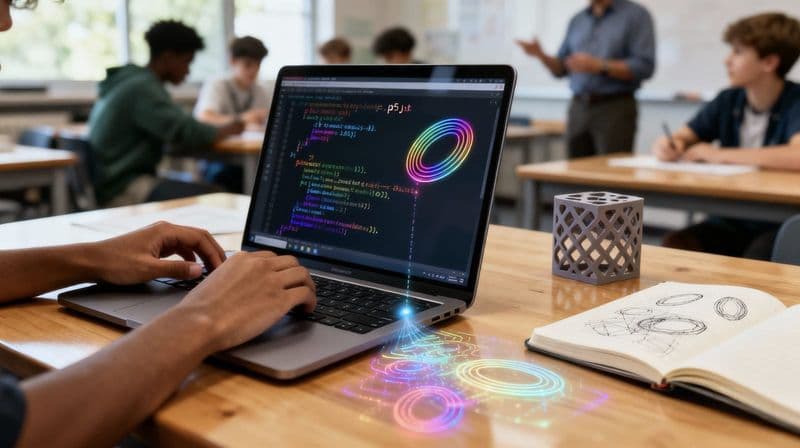
The Role of p5.js in Making Art Interactive
p5.js is one of the most popular tools for making art through code. It simplifies programming. This lets creators focus on design and expression instead of syntax. Kids can use p5.js to play with motion, sound, and interactivity. It's great for visual learners and young designers.
p5.js connects coding with visual arts. It spans from interactive installations to sound art. Artists use it to create live performances, generative visuals, and playful online experiences. Its open-source nature encourages collaboration and community learning among other creative coders worldwide, particularly in web development.
Exploring Generative Art and Design in Modern Education
Education systems worldwide are embracing creative coding as part of STEAM learning. By merging logic and imagination, schools teach kids to explore ideas through generative design. Instead of only reading about algorithms, students use them to paint, move, and build.
Creative coding encourages experimentation and problem-solving through play. Teachers can start projects that link art, data, and storytelling. This helps kids see technology as a tool for creativity, not just for technical tasks. It’s a shift toward education that values both logic and imagination.
FAQ
At what age can children start learning creative coding?
Children can start learning creative coding as early as age 6 using visual platforms like Scratch or Code.org. These tools help kids create art and games while understanding the basics of computer programming. Early exposure allows them to explore ideas, shapes, and colors through interactive projects. As they grow, they can move to text-based programming languages like p5.js or the Processing programming language to build more advanced digital worlds.
Do children need artistic skills before starting creative coding?
No, kids don’t need prior artistic training to begin creative coding. The goal is to combine imagination and logic, not to achieve perfect art. As youngcoders experiment with color, music and algorithms, they naturally develop artistic expression. Creative coding helps children explore ideas and create freely, turning code into artwork through experimentation and play. It’s a process that nurtures both creativity and problem-solving, regardless of artistic background.
What software or platforms are best for beginners in creative coding?
Beginners can start with tools like Scratch, Code.org, p5.js, and the Processing programming language. These platforms makeart through code that are simple and exciting. Kids can experiment with computer algorithms, shapes and motion to design visuals and sound-based art. These programs act as creativity support tools, guiding learners to understand the creative process step by step. As they gain programming experience, they can try more complex projects and even collaborate with other creative coders online.
How does creative coding complement traditional academic subjects?
Creative coding blends easily with traditional learning. It strengthens math skills through geometry and pattern design, builds storytelling and language skills through animation, and supports science by simulating real-world systems.
Students also develop logical thinking, design awareness, and time management. When coding connects with visual arts and problem-solving, it helps children see how academic concepts translate into creative, real-world applications, especially in computer art. The result is learning that feels engaging, practical, and inspiring.
Can creative coding lead to future career opportunities?
Yes. Learning creative coding opens doors to careers in Animation, Game design, Digital marketing, UX design, and interactive media. It also builds valuable skills in Programming techniques, Generative art, and Artificial intelligence, which are vital in today’s technology-driven world. Many modern designers, generative artists, and creative people use code as their primary medium to innovate and express themselves. By joining creative coding courses, children prepare early for a future where creativity and coding go hand in hand.
Comments
Your comment has been submitted successfully!